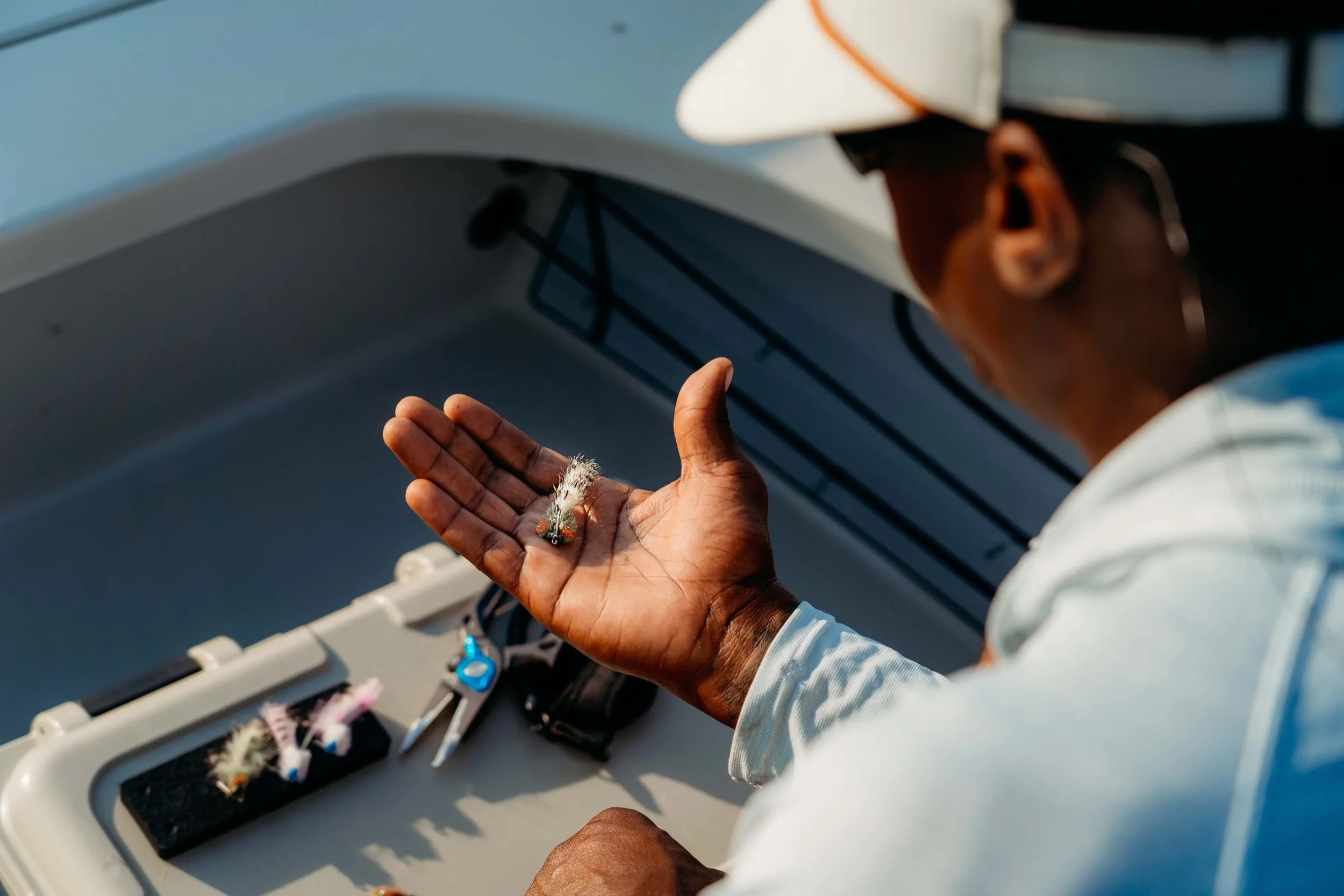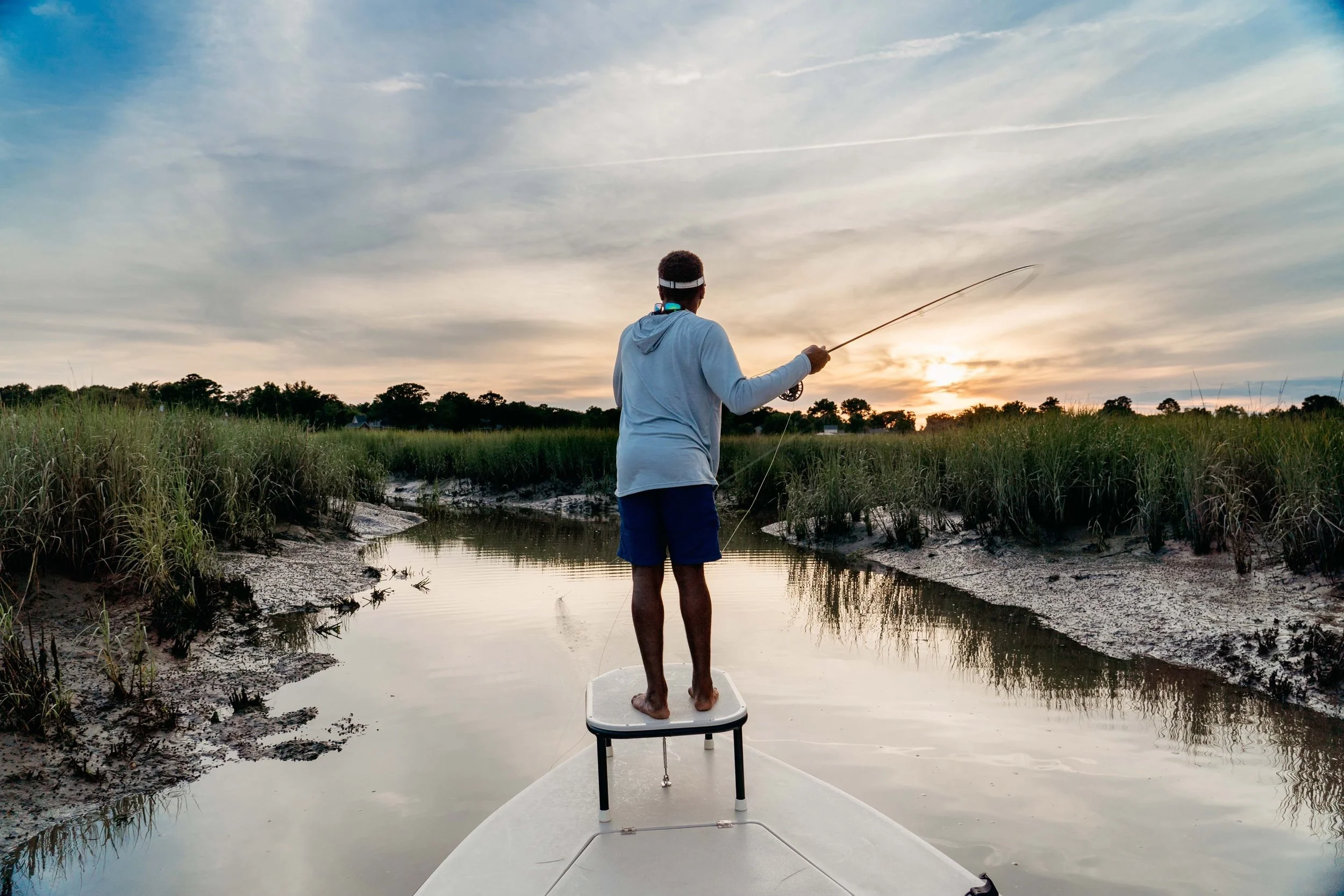The Technical Side of Fly Fishing for Redfish in the Lowcountry
Why the Marsh Around Charleston Can Be Tougher Than It Looks
Fly fishing for redfish in the Lowcountry, especially around Charleston, is one of the most rewarding challenges in shallow-water angling. On paper, it seems like a dream fishery: vast marshes, plenty of redfish, year round tides that brings them right up into sight-fishing range. But ask anyone who’s done it more than a few times, and they’ll tell you it’s not as easy as it looks. Compared to places like Louisiana or the Texas coast, Charleston demands more patience, tighter execution, and a deeper understanding of the fish and the environment. Here’s why.
1. Water Clarity Isn’t What It Seems
There’s a common misconception that Charleston’s water is clean, but in reality, it’s dirty for much of the year. During the summer, when most visiting anglers come down, the water is typically stained or muddy from heat, algae, and constant tidal movement. Some flood tides do bring cleaner water onto the grass flats, but it’s not consistent. Unlike the gin-clear flats of Florida or the muddy-yet-predictable waters of Louisiana, the Lowcountry sits in between: murky enough to hide fish, but not so dirty that you can get away with sloppy presentations. It’s a fine line that changes week to week. To be successful out here, you shouldn’t just focus on the flood tide’s. There’s a year-round fishery and you can sight-fish, any part of the tide most times of the year.
2. Tide Windows Are Tight
Charleston’s tidal swing can exceed six feet, and the windows for targeting tailing redfish on the flood tide are brief and unforgiving. If you’re not on the flat when it starts to fill, or if you’re late getting into position, your shot is gone. And once the water gets too deep, the fish vanish into the grass. Compared to other regions with more gradual or extended tidal changes, the pace here is faster and demands precise timing. Do not get stuck on the outgoing tide, you could be there for a long time. Sometimes it might feel like you have longer than you really do because the obstruction to exiting the creek or flat is closer to the entrance. This might have been the case for me a time or two while learning the area. Pushing in a new creek is best at the bottom of the incoming tide.
3. Fly Selection Isn’t Complex—But Presentation Is
Unlike most ultra-pressured fisheries where fish refuse anything but perfect imitations, redfish in Charleston generally aren’t that picky when it comes to fly pattern. The key is getting the size and shape right—flies that mimic fiddler crabs, shrimp, or small baitfish in a natural silhouette. Color matters less than profile. Generally I toss natural colors in clear water and blacks or purples in darker water. But just because they’ll eat a simple fly doesn’t mean they’ll tolerate a sloppy entry or bad retrieve. Landing the fly softly, presenting it at the right angle, and knowing when to move it—or not—is where most anglers lose their shot.
4. Wind, Grass, and Tight Quarters
You won’t get many easy casting lanes here. The spartina grass can be shoulder to head-high in the creeks at lower tides, and fish often feed deep inside it on the flood. Add in summer winds or swirling breezes around the creeks and you’ll find yourself needing short, accurate casts in frustrating conditions. Even experienced casters can struggle to get the fly where it needs to go without fouling in grass, hanging on oysters, or spooking the fish.
5. Fewer, More Meaningful Shots
In places like Louisiana, you might get dozens of shots a day at big, aggressive reds. In Charleston, especially in the summer, you might get a handful of solid chances per tide. And many of those may be at singles or pairs feeding subtly. That means every cast has more pressure on it. If your cast lands a foot short or your leader slaps the water, the opportunity may be gone for good. The payoff is huge when it works—but it rarely comes easy.
Final Thoughts
Charleston’s redfish are not impossible but they’re far from automatic. The challenges come in layers: inconsistent clarity, fast tides, limited shot windows, and a technical environment that leaves little room for error. But that’s part of the appeal. It’s a fishery that makes you better if you’re willing to adapt and slow down. If you like the kind of fly fishing where every element matters, tide, light, wind, position, and presentation, the Lowcountry rewards the details. And when that redfish finally tips up and eats, it means more because you earned it.
Written by: Austin Young
Photos by: Austin Young




